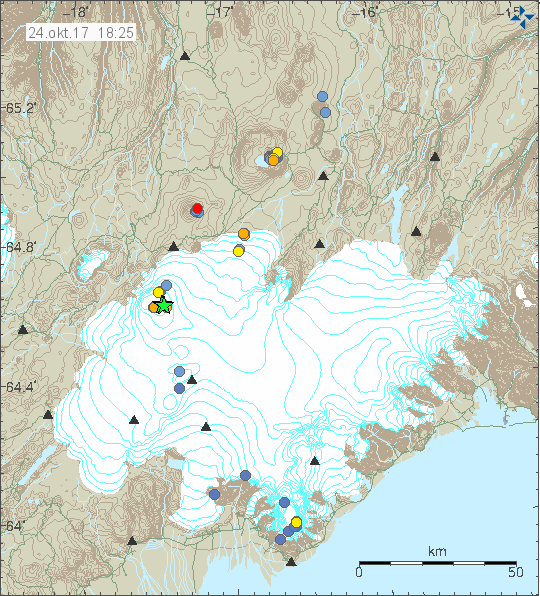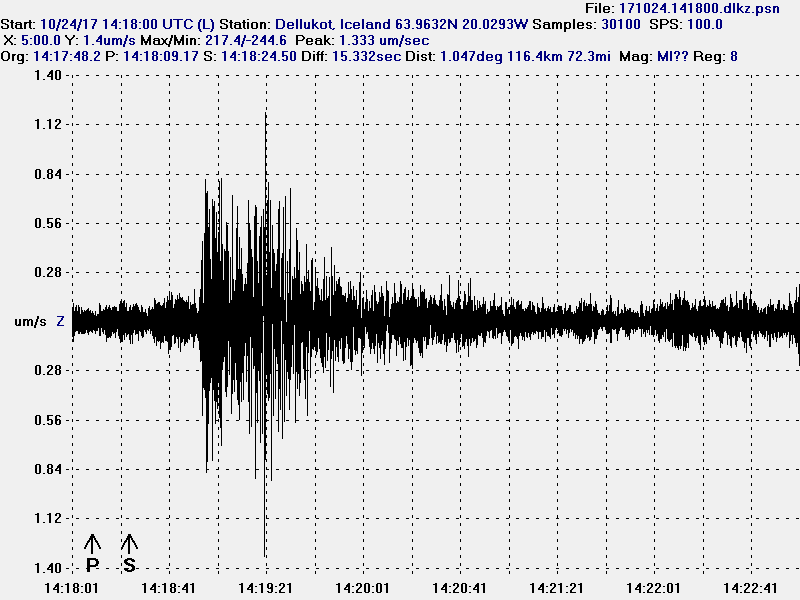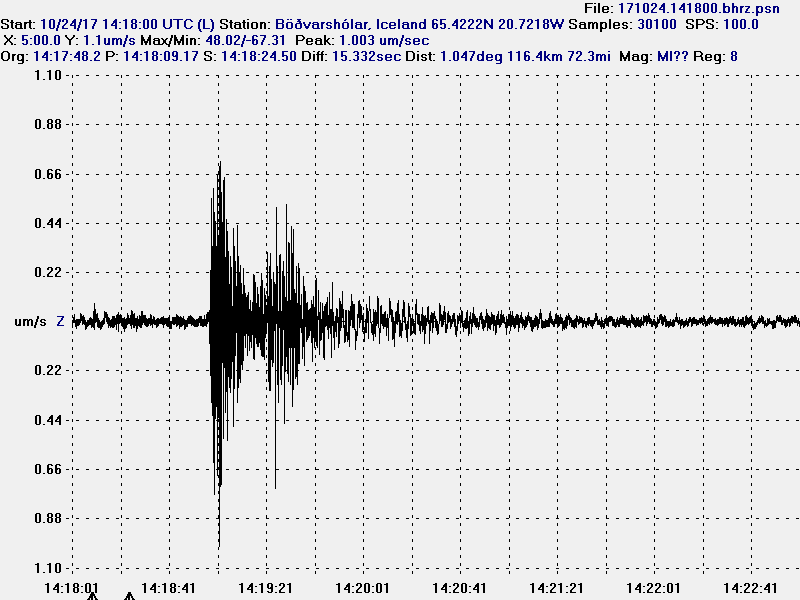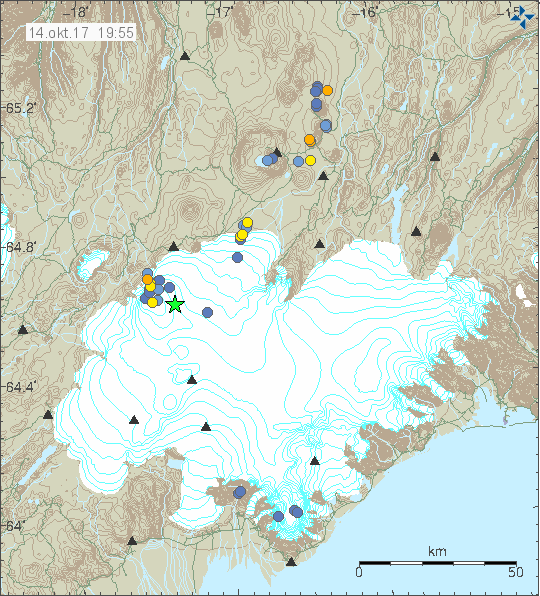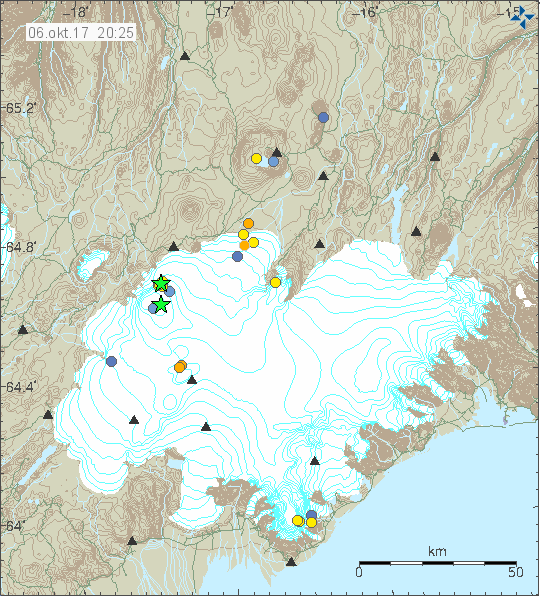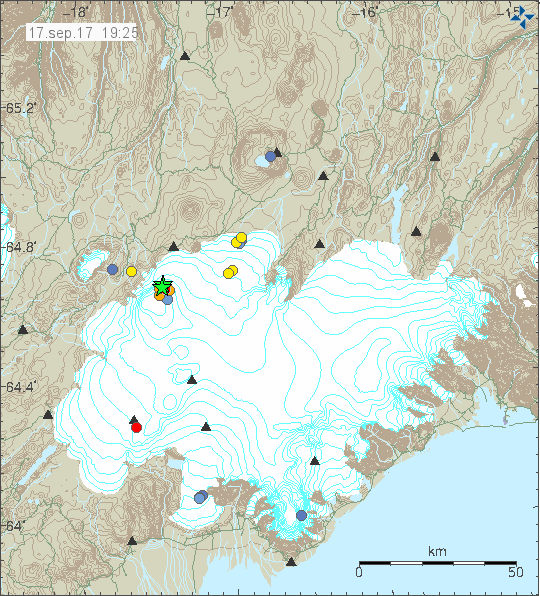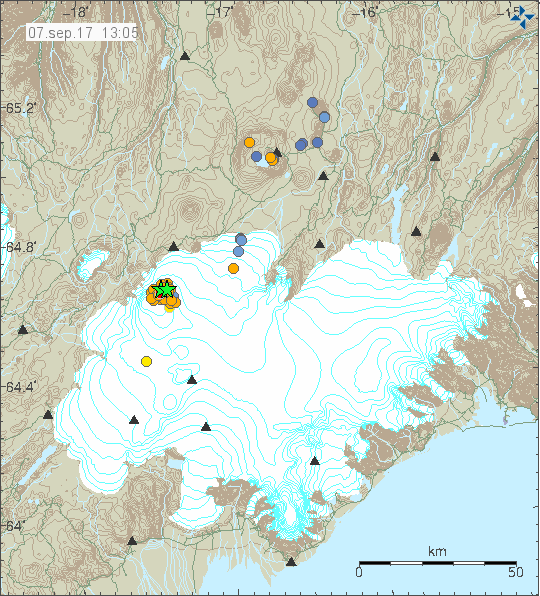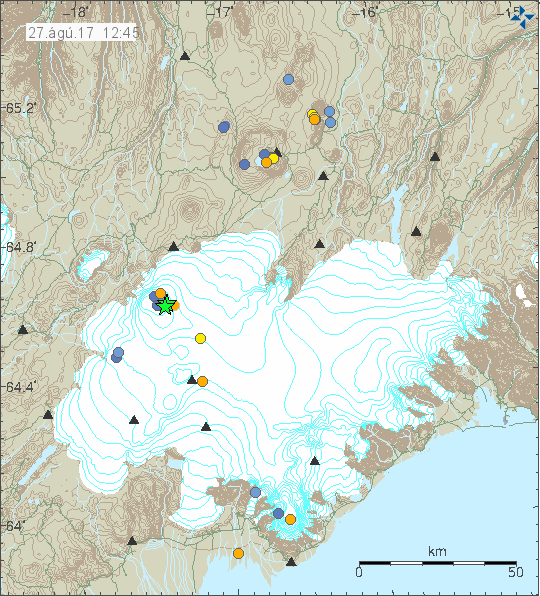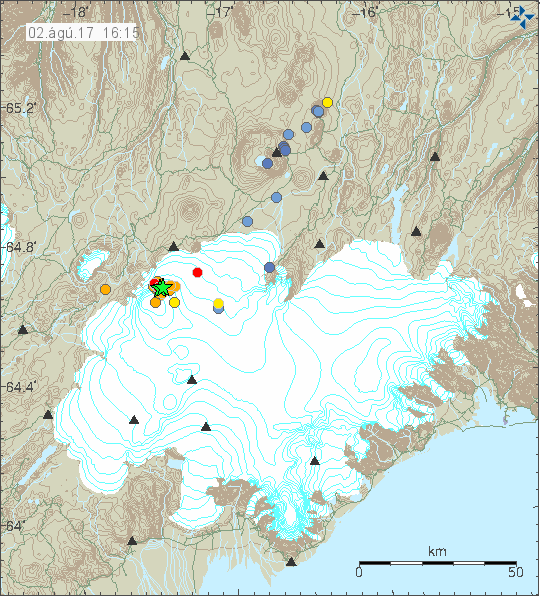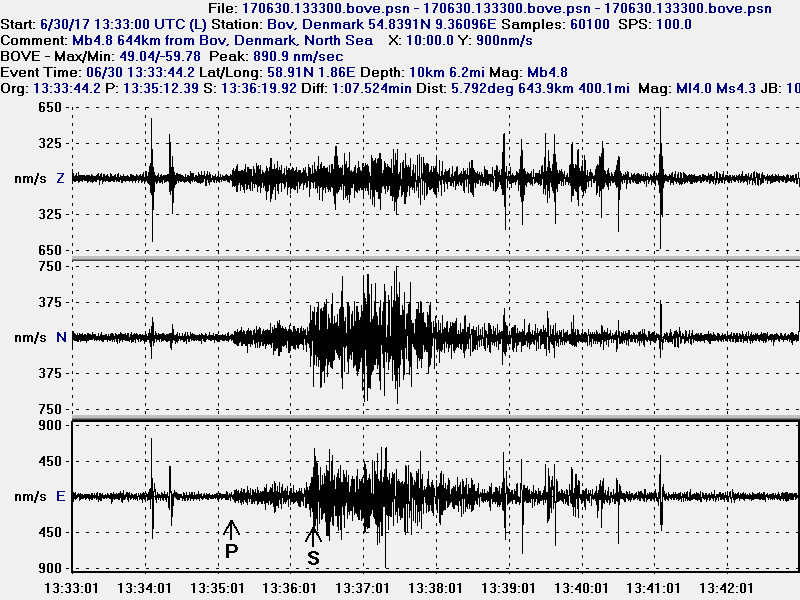Since the eruption ended in Holuhraun on 27-February-2015 there has been a regular earthquake activity and dike intrusions happening south of Bárðarbunga volcano (main). I am no good with editing images at the moment so I’m going to attempt to describe the areas that are having deep earthquake activity.
First the back-story has to be looked at.
Since the end of the eruption in Bárðarbunga volcano I have been looking at data and the history of the volcano. I have come to release that the eruption cycles of Bárðarbunga volcano are a lot larger then I first thought and is agreed on in the science community. What is agreed on in the science community is that Vatnajökull glacier area has a periodic high in eruption activity every 130 – 140 years. With a period of low activity that goes on for 60 – 100 years. The only science article I was able to find on this subject was this article here. I don’t know if eruption cycles in Bárðarbunga volcano line up with wider increase in eruptions in Vatnajökull area (this includes volcanoes like Kerlingafjöll, Grímsvötn, Öræfajökull, Hamarinn (Bárðarbunga), Þórðarhyrna (Grímsvötn), Esjufjöll, Snæfell [most eastern volcano, never erupted in last 12.000 years], Askja, Tungnafellsjökull [never erupted in last 12.000 years]).
Last eruption cycle in Bárðarbunga volcano started in 1697 (unclear on error margin) and ended in 1910. That did mean a new eruption from Bárðarbunga volcano system every few years, with longest breaks lasting up to 16 years. Shortest break between eruption was only 1 year at the most. Maybe even less, due to lack of documentation during this time period shorter period can’t be ruled out. I am unsure when the eruption cycle before 1697 eruption cycle started I only know that it ended in 1477 with a possible quiet period of 220 years, but as before, this gap might only appear to be this due to lack of historical documentation during this period (or lost documents). I don’t know if current assumptions about more active periods in Vatnajökull glacier area and low periods are even correct, since I am unsure on how they got this conclusions. What can also not be ruled out is that between extremely large eruption events in Bárðarbunga volcano that it takes the volcano extra long time to recover (example, the eruption 1477 appears to have been extremely large event), but there are other factors at work in my view and this connects directly to the deep earthquake activity I’ve been seeing around Bárðarbunga volcano since 2015 and before that (going back several years).
The areas I have seen deep earthquakes take place are this ones.
Trölladyngja, earthquakes have appeared deeper then 20 km.
In Dyngjujökull glacier area. This area is also subject to dike intrusion 5 – 8 km south of it.
Dyngjuháls area. It is part of Dyngjujökull glacier area, just north of it.
Kistufell area.
During the first days of 2014 eruption in Bárðarbunga volcano (before the Holuhraun eruption started), magma did flow into Dyngjuháls area. As can be seen on this image from August-2014.
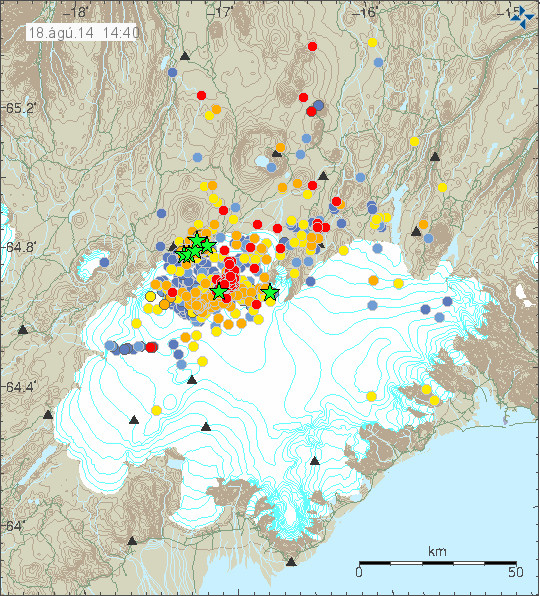
This image is from August-2014. Copyright of this image belongs to Icelandic Met Office.
This magma never erupted and appears to be there in what seems to be a magma chamber. It remains a question if this magma chamber is now starting to overpressure and is going to erupt in next few years. As for Dyngjujökull glacier area, that is even a more mystery since no magma camber clearly visible in the data. That suggests there might be a magma chamber at greater depth then normal under Dyngjujökull glacier area. It is not possible to know when next eruption is going to happen in Bárðarbunga volcano, but based on historical data next eruption might happen in the next 3 to 16 years (counting from 2015).
Donations
Please remember to support my work with donations. Without them I am going to have problems financially this September. I have found a solution to my financial problems and that involves moving back to Iceland in July-2018. The worst of my finical problems is going to persist until December-2017, from January-2018 and until July-2018 my situation is going to be slightly better. It is not going to be great from January and until July-2018. After July-2018 I won’t have any major problems financially. This happens due to Iceland and Denmark tax system complexities as I get paid from Iceland and tax is paid there and on top of that living in Denmark results in smaller social welfare payment. By moving to Iceland I am going to increase my social welfare payment (as the system is set-up this way) around 799,49€ a month. Iceland is far more expensive then Denmark (up to 66% more expensive), but with clever buying strategy for food and other stuff I should be able to have it decent in Iceland (unlike my current status now living in Denmark). As always, thanks for the support. 🙂
Article updated at 20:42 UTC. Minor text fixes.
